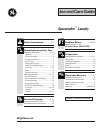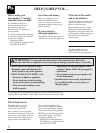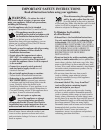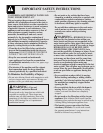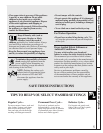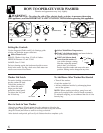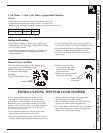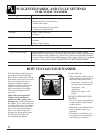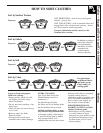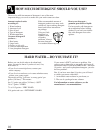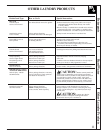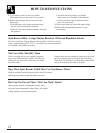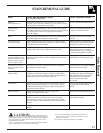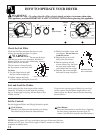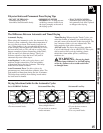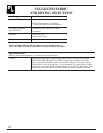
IMPORTANT SAFETY INSTRUCTIONS
(continued)
CALIFORNIA SAFE DRINKING WATER AND
TOXIC ENFORCEMENT ACT
This act requires the governor of California to
publish a list of substances known to the state to
cause cancer, birth defects or other reproductive
harm and requires businesses to warn customers
of potential exposure to such substances. Gas
appliances can cause minor exposure to four of
these substances, namely benzene, carbon
monoxide, formaldehyde and soot, caused
primarily by the incomplete combustion of
natural gas or LP fuels. Properly adjusted dryers
will minimize incomplete combustion. Exposure
to these substances can be minimized further by
properly venting the dryer to the outdoors.
• Clean the dryer lint filter before each load to
prevent lint accumulation inside the dryer or
in the room. DO NOT OPERATE THE DRYER
WITHOUT THE LINT FILTER IN PLACE.
• Keep the area around and underneath
your appliances free from the accumulation
of combustible materials, such as lint, paper, rags
or chemicals.
• The interior of the machine and the exhaust
duct connection inside the dryer should be
cleaned periodically by a qualified individual.
To Minimize the Possibility of Injury:
• Do not mix chlorine bleach with ammonia or acids
such as vinegar and/or rust remover. Mixing can
produce a toxic gas which may cause death.
• Do not wash or dry articles that have been
cleaned in, washed in, soaked in, or spotted with
combustible or explosive substances (such as,
paint, gasoline, degreasers, dry-cleaning solvents
or kerosene) which may ignite or explode.
Do not add these substances to the wash water
and do not use or store these substances on/or
around your washer and dryer during
operation.
WARNING—HYDROGEN GAS is
produced by the chemical action within your
water heater and the gas can accumulate in the
water heater and/or water pipes if hot water has
not been used for a period of two weeks or longer.
HYDROGEN GAS CAN BE EXPLOSIVE
UNDER THESE CIRCUMSTANCES. So to
prevent the possibility of damage or injury, if you
have not used hot water for two weeks or more,
or move into a residence in which the hot water
system may not have been used for some time,
turn on all hot water faucets and allow them to
run for several minutes before using any
electrical appliance which is connected to the hot
water system. This will allow any hydrogen gas to
escape. Since the gas is flammable, do not smoke
or use an open flame or appliance during this
process.
• Never reach into washer while it is moving.
Before loading, unloading or adding clothes,
push the Cycle Selector knob in, then wait until
the machine has completely stopped before
opening the lid.
• Never reach into the dryer while the drum is
moving. Before loading, unloading or adding
clothes, wait until the drum has completely
stopped.
• Do not wash or dry fiberglass articles in your
appliance. Skin irritation could result from the
remaining glass particles that may be picked up by
clothing during subsequent appliance uses.
• The laundry process can reduce the flame
retardancy of fabrics. To avoid such a result,
the garment manufacturer’s care instructions
should be followed very carefully.
WARNING—Fire and
Spontaneous Combustion Hazard
Do not wash or dry items that are soiled with
vegetable or cooking oil. These items may
contain some oil after laundering. Due to the
remaining oil, the fabric may smoke or catch
fire by itself causing fire or a spontaneous
combustion hazard.
4



